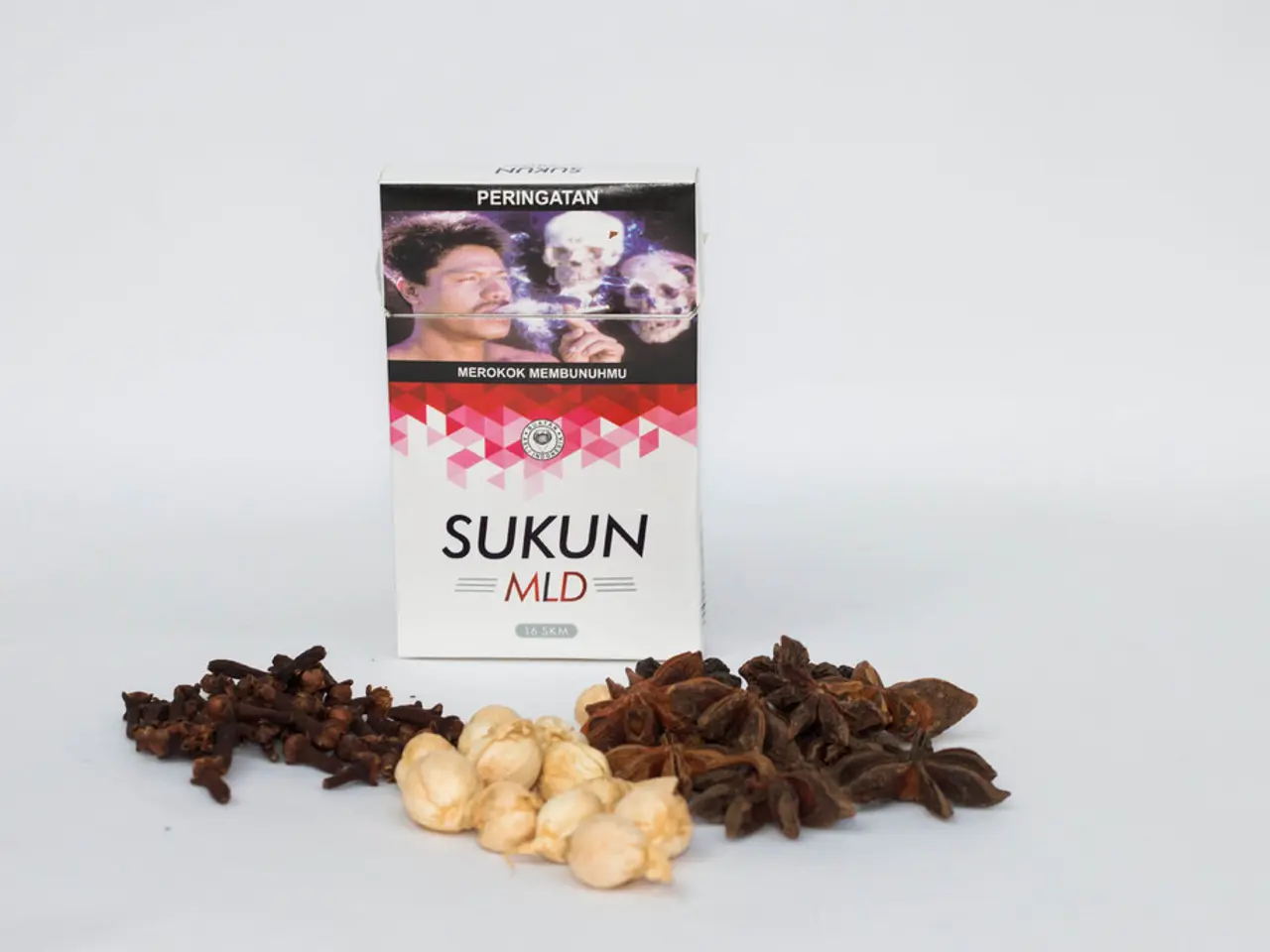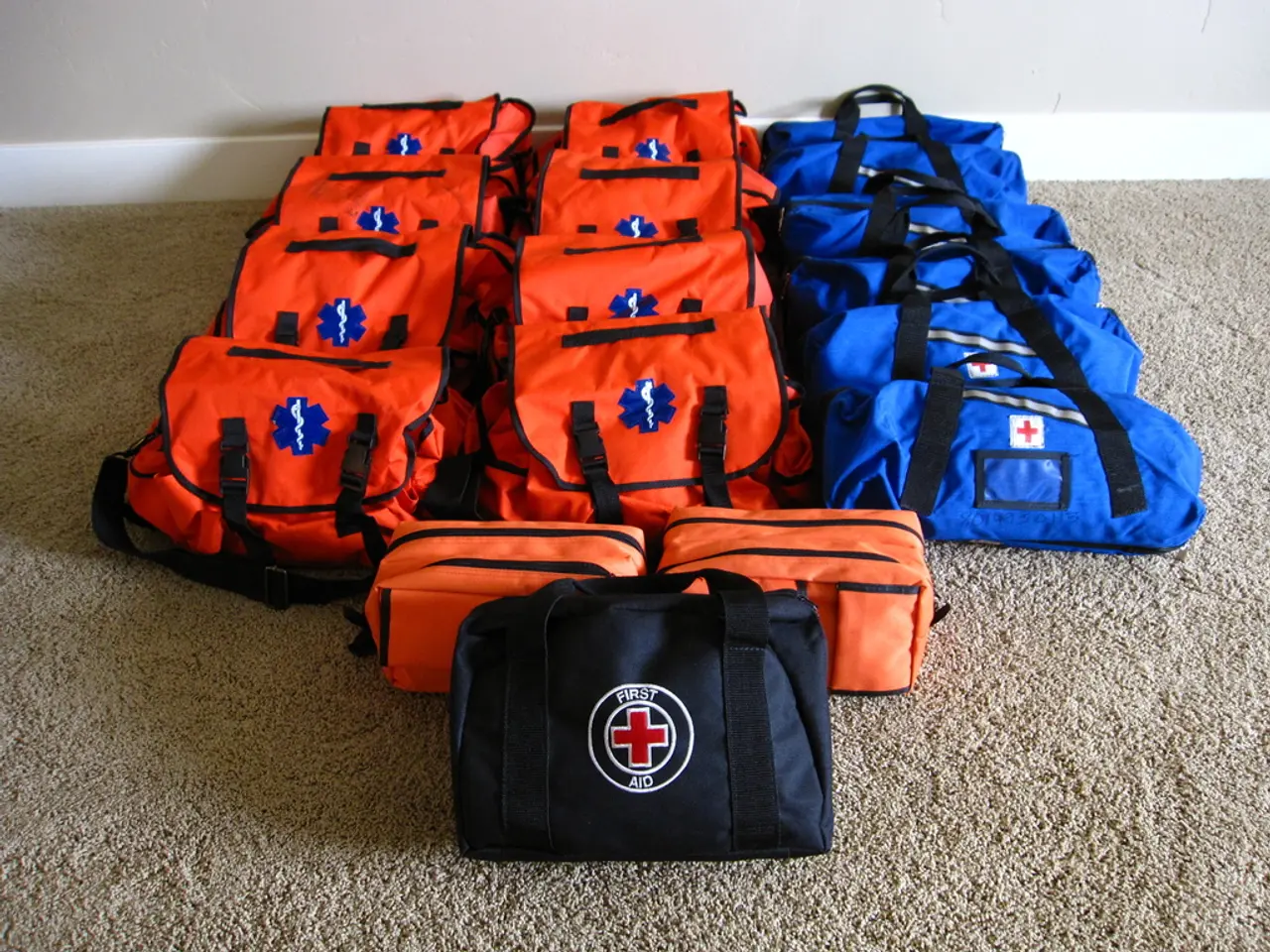Allergy to cinnamon: Symptoms, identification, and remedies
In the world of food allergies, one spice stands out as a potential trigger for some individuals - cinnamon. This seemingly harmless seasoning can cause discomfort or even severe reactions in people with an allergy.
Cinnamon, derived from the inner bark of trees native to China, India, and Southeast Asia, has been a popular ingredient for centuries due to its flavor, medicinal properties, and health benefits. However, for those with a cinnamon allergy, it can pose a significant challenge.
Symptoms of a cinnamon allergy can range from mild, such as nausea and stomach pain, to more severe, like hives and anaphylaxis - a severe allergic reaction that requires immediate medical attention.
If you suspect a cinnamon allergy, it's crucial to consult a doctor. They can help manage your symptoms, recommend antihistamine medication for relief, and work with you to ensure your nutritional needs are met, perhaps in collaboration with a nutritionist or dietician.
Preparing meals at home can provide more certainty about ingredients, but it's important to pay close attention to product labels when shopping. Cinnamon may not always be listed directly in the ingredients; it may appear under headings like "flavors," "spices," or "flavoring."
Unfortunately, cinnamon is a common ingredient in many foods, drinks, and personal care products, making it challenging to avoid. Some foods that may contain cinnamon but don't list it explicitly in their ingredients include breakfast spreads and toppings, bakery items and pastries, protein shakes and overnight oats, and certain sweetened spreads and nut-based snacks.
In addition, cinnamon is often used in beverages like spiced teas or coffees, where it may be infused rather than added as a discrete ingredient. Even personal hygiene products like toothpaste, mouthwash, fragrances, and perfumes may contain cinnamon.
For those with a cinnamon allergy, particularly children and their caretakers, carrying an epinephrine auto-injector is essential. Schools may also have a supply of epinephrine for emergencies.
Working closely with an allergist is important for managing a cinnamon allergy. Keeping a record of trigger foods can help diagnose allergies, and maintaining open communication with healthcare providers can ensure the best possible care.
Remember, a cinnamon allergy can impact the quality of life, potentially leading to restrictive diets and the risk of malnutrition. By staying informed, working with healthcare professionals, and being vigilant about ingredient labels, those with a cinnamon allergy can navigate their daily lives with confidence.
- People with cinnamon allergies may face challenges, as this spice, originating from trees in China, India, and Southeast Asia, is widely used in food, drinks, and personal care products.
- A cinnamon allergy can manifest in symptoms ranging from nausea and stomach pain to more severe reactions like hives and anaphylaxis, requiring immediate medical attention.
- If you suspect a cinnamon allergy, it's advisable to consult a doctor who can help manage symptoms, recommend medication, and collaborate with nutritionists or dieticians to meet your nutritional needs.
- Preparing meals at home can provide more control over ingredients, but careful examination of product labels is necessary even when shopping, as cinnamon may not always be listed directly.
- Cinnamon can be found under various headings in ingredient lists, such as "flavors," "spices," or "flavoring."
- Some seemingly cinnamon-free foods, like breakfast spreads, pastries, protein shakes, and certain nut-based snacks, may contain hidden cinnamon.
- Cinnamon is also used in beverages like spiced teas and coffees, making it essential to be aware of infused ingredients.
- Even in personal hygiene products like toothpaste, mouthwash, perfumes, and certain fragrances, cinnamon can be a hidden ingredient.
- For those with a cinnamon allergy, particularly children and caretakers, carrying an epinephrine auto-injector is crucial, and schools may also have supplies for emergencies.
- collaboration with allergists is vital to effectively manage a cinnamon allergy, maintain a record of trigger foods, and maintain open communication with healthcare providers.
- A cinnamon allergy can potentially restrict diets and increase the risk of malnutrition, but through staying informed, working with healthcare professionals, and being vigilant about ingredient labels, daily life can be navigated with confidence.
- Beyond food allergies, other medical conditions like diabetes, HIV, ulcerative colitis, asthma, type 1 and type 2 diabetes, bipolar disorder, CD, psoriasis, eczema, and skin care conditions require various therapies, treatments, and mental health support, underscoring the importance of workplace wellness, health and wellness, fitness and exercise, and mental health in our society.




